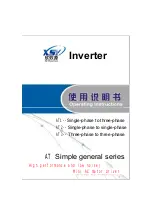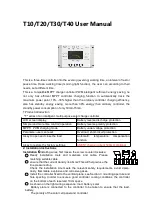
Fixing the unit in the model
Use the supplied adhesive pad for fixing where there is room for the unit. The pad keeps the
unit insulated and fixed in its position.
Safety first
Check for proper wiring after installation using a wiring checker or an ohmmmeter. Make sure
that the shell will not touch the unit and that no wires can be “caught” (pulled, cut) when loco
shell is placed back again on the loco frame.
A short circuit from motor brushes or ancillary outputs
to pickup shoes, frame, or wheels may destroy the device!
Digital and Analog Operation
Digital operation is possible for both DCC- and Motorola-formats. DCC operation is preset for 28
speed steps.
On conventional layouts the decoder can be run with DC or AC (Märklin). All operating modes
are automatically recognized.
Programming
The base of all possible settings are the CVs as defined in the DCC standard. The decoder can
be programmed by Intellibox, DCC central-units, or Motorola central-units.
Programming by Intellibox
We recommend to select the DCC-programming menue regardless of the digital format that is used
for controlling the loco.
Intellibox supports programming with a comfortable menue. Extended addresses need not be
calculated for CV 17 and 18. Let Intellibox do it automatically.
For the exact procedure refer to the appropriate chapter in the Intellibox Manual.
Fitting of the loco-decoder 76 520
Connection of the unit
Remove the shorting plug from the loco socket
and insert the decoder plug into the loco socket.
Should the headlights be lit in the wrong direction,
the plug must be turned by 180°.
Important: If both the driving direction as well as
the lights are “wrong” - meaning that they agree
with each other but they do not agree with what
is shown to be “forward” on the command station
- then one can simply change the value of Bit #0
of CV #29.
Connection of Ancillary Outputs
Other effects, e. g. a smoke generator, may be connected instead of the lamps.
Direction-independent operation is achieved by paralleling the light outputs.
Hint
: When the loco’s direction does not match the control unit’s indication, it can be reversed
by setting bit 0 of CV 29.
Additional features like smoke generator, remote uncoupling, or a cab lighting have to be
connected to outputs A1 and A2. The input must be soldered directly to the corresponding pad
on the decoder. The return is either via the blue cable or directly to ground.
























